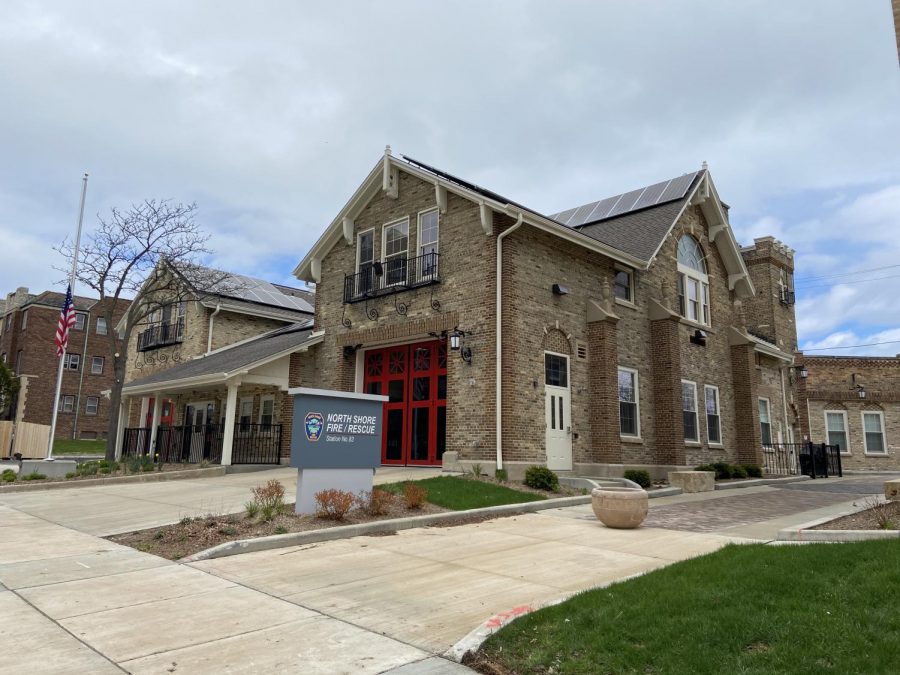Historical society hosts presentation series on historical preservation
The Shorewood Fire Department building on Murray Ave. The building, over 90 years old, was almost torn down, but the historical society advocated for its preservation.
The Shorewood Historical Society is hosting a series of three presentations that discuss Shorewood’s historical architecture, titled “Shorewood Architecture Reflects Village History: How Can We Leverage Our Historic Resources to Benefit the Whole Community?” The first program was held virtually via Zoom on April 27 at 6:00 pm, and the next two presentations will be held on May 4 and May 11, both at 6:00 pm.
Each event explores a different aspect of Shorewood’s historical architecture. The first program, titled “The Building of Shorewood,” covers the village’s history and its development. The second session, “Shorewood Architecture and Review of 2011 Architectural Survey,” focuses on highlighting specific historic buildings in the village, as well as a summarization of a survey that occurred in 2011 which identified every historic house and buildings in Shorewood. The last session, “Options for Preservation,” will discuss the tools and options for preservation of historic buildings and houses in the village.
According to a letter sent by the village to owners of historic houses informing them of the event, “After conclusion of the program, the village will take additional steps to obtain public input on the preservation options discussed. The results would be provided to the village board for review and possible consideration of next steps.”
Community members will also have a chance to ask questions and share opinions about the village’s architecture and preservation options.
The historical society has been interested in historic preservation in the village for many years. After a historic mansion on Lake Drive, owned by former Milwaukee County Executive Chris Abele, was demolished, the village board started looking at ways to preserve more historic buildings.
“People were quite upset that such a lovely home was being torn down,” said Karen de Hartog, education chair for the historic society and one of the presenters for the series. “Then the village board became interested, and decided to look into historic preservation options for the community. That was put on their agenda last year, but then was bumped due to the COVID problems, so it’s just coming back up this year.”
The historical society first tried to suggest change in ordinance to the village board, but was unsuccessful. The presentation series is made to educate the community about Shorewood’s architecture and history, but also to possibly gain public support for movements to change village ordinance in favor of historic preservation.
“In order to pull together support from the community as a whole, which is extremely important if this is going to go anywhere, we decided that we had to start out from an educational point of view, and therefore people should know the history in how the buildings developed and how the village itself was developed,” de Hartog said.
In order to pull together supports from the community as a whole … [the historical society] decided that we had to start out from an education point of view,
— Karen de Hartog, education chair
All community members are welcome to attend the events, but owners of historical houses are especially welcome.
“[Historic home owners] are the ones who are probably the most affected [by the presentation],” de Hartog said. “On the other hand we are hoping for a larger audience of people who just like the ambience of Shorewood and even if they’re living in an apartment somewhere, they think that preserving the historical nature of Shorewood is important.”
A topic that will be discussed in the series will be the history of preservation efforts in the village. For example: the fire department building on Murray Ave. The village board was considering tearing it down and starting over, but after lots of input from the historical society and the public, a plan to preserve the building by keeping it in working condition was developed.
Another example is past discussions of historic preservation; one in the 1960s, when a lot of houses were preserved instead of being torn down, and another in the 1990s, when the business district, instead of being preserved, was developed and many new buildings.
“In both cases they were trying to provide more housing and also to increase the tax base. So there’s lots of motivation for doing that kind of stuff, but short preservation can also increase the tax base,” de Hartog said.
Shorewood architecture, especially the design of houses, is specifically influenced by the styles that were popular in the 20s and 30s, when between 180 and 220 houses were built every summer. Revival styles like the Mediteranean Revival and the Colonial Revival were represented in these houses. The style of Art Deco can be seen in a few buildings on Capitol Dr., as well. But the bungalow is also a very common style of house that can be seen all over the village.
“The bungalows were thought to be a very practical starter home,” de Hartog said. “For people, that was a house that was affordable, and was easily expandable, and it was just a way for people to move out of Milwaukee and get a foothold in the suburbs.”
Duplexes were also a popular house to build in the early 20th century.
“Sometimes you can’t even tell they’re duplexes from looking at the house,” de Hartog said. “But very often people moved here with the thought that if they built a duplex, they could live in one level and rent out a second level, and that could help pay off the house tax and so on.”
More information about the series can be found on the Shorewood Library website, including the link that attendees can use to log in to the event via Zoom.


